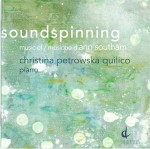 Christina Petrowska Quilico’s new recording Soundspinning – Music of Ann Southam (Centrediscs CMCCD 26018 musiccentre.ca) brings her discography to nearly 50 CDs and adds another item to the Canadian Music Centre’s already enormous collection of recorded Canadian works. Petrowska Quilico and Southam were close friends and frequent collaborators. Their relationship has given Petrowska Quilico a unique point of access to Southam’s world and established her as a respected interpreter of Southam’s piano compositions.
Christina Petrowska Quilico’s new recording Soundspinning – Music of Ann Southam (Centrediscs CMCCD 26018 musiccentre.ca) brings her discography to nearly 50 CDs and adds another item to the Canadian Music Centre’s already enormous collection of recorded Canadian works. Petrowska Quilico and Southam were close friends and frequent collaborators. Their relationship has given Petrowska Quilico a unique point of access to Southam’s world and established her as a respected interpreter of Southam’s piano compositions.
The repertoire on the disc includes five cycles of miniatures, many of which are based on a 12-tone row that Southam used extensively. But the recording also includes two “Bluesy” sets, Three in Blue and Five Shades of Blue, that are particularly intriguing for their obvious reflection of jazz influences. All of them are delightfully playful creations that Petrowska Quilico plays with superb technique and unbridled joy.
The most substantial item is Altitude Lake, written in 1963. It provides a considerable contrast to the shorter pieces on the rest of the disc. As a larger conception it comes across as episodic and complex. Petrowska Quilico spends generous amounts of time exploiting Southam’s technique of sustained resonances and dramatic contrast. Remembering Schubert is of nearly equal length but more meditative. Southam uses a Schubert-like figure strongly reminiscent of an art song accompaniment to cycle through numerous tone row wanderings.
Soundspinning is an important recorded document in the compilation of Southam’s piano works and is masterfully performed by Petrowska Quilico.
 Canadian pianist Lucille Chung has released her 11th recording, Liszt (Signum Classics SIGCD533 signumrecords.com), that includes a variety of short works before launching into the Sonata in B Minor S178. Chung writes a portion of the liner notes to explain her personal understanding of Liszt’s music as it has evolved over her career. The B Minor Sonata reveals, for Chung, the composer’s mature voice and dispenses with the extravagant scale of virtuosic pianism often found in his earlier writing. Her argument acknowledges that the sonata in Liszt’s hands is an evolutionary new form but also stresses that he is stripping away the “razzle-dazzle” in favour of his introspective quest.
Canadian pianist Lucille Chung has released her 11th recording, Liszt (Signum Classics SIGCD533 signumrecords.com), that includes a variety of short works before launching into the Sonata in B Minor S178. Chung writes a portion of the liner notes to explain her personal understanding of Liszt’s music as it has evolved over her career. The B Minor Sonata reveals, for Chung, the composer’s mature voice and dispenses with the extravagant scale of virtuosic pianism often found in his earlier writing. Her argument acknowledges that the sonata in Liszt’s hands is an evolutionary new form but also stresses that he is stripping away the “razzle-dazzle” in favour of his introspective quest.
Consequently, Chung takes every opportunity to explore the moments of repose with softer touch, intimacy and plenty of hesitation. She brings a different kind of intensity to the sonata than is usually heard, one with less bombast – but not less impact. She sets out to play the sonata with a different intent, to explore the depths rather than conquer the heights. Her playing is brilliant and entirely up to the technical demands of the piece. Her new appreciation of the composer’s personal presence in the music makes the sonata, despite her lifelong acquaintance with it, entirely fresh and alive.
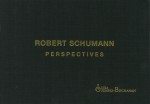 Luisa Guembes-Buchanan’s new 2CD set Robert Schumann – Perspectives (Del Aguila Records DA 55312 luisagbuchanan.com) is going to attract a lot of attention for several reasons. Guembes-Buchanan plays with a remarkably wide expressive range. She embraces every opportunity that Kinderszenen Op.15 gives for imitate expression and pulls the music deeply into a very private place. It’s an amazing effect that’s supported by very close and clean recording. She performs on a Fazioli 228, which is a little smaller than a full concert grand. It has a harmonically rich bass and mid-range, and suits this repertoire and the performer’s playing style extremely well.
Luisa Guembes-Buchanan’s new 2CD set Robert Schumann – Perspectives (Del Aguila Records DA 55312 luisagbuchanan.com) is going to attract a lot of attention for several reasons. Guembes-Buchanan plays with a remarkably wide expressive range. She embraces every opportunity that Kinderszenen Op.15 gives for imitate expression and pulls the music deeply into a very private place. It’s an amazing effect that’s supported by very close and clean recording. She performs on a Fazioli 228, which is a little smaller than a full concert grand. It has a harmonically rich bass and mid-range, and suits this repertoire and the performer’s playing style extremely well.
Guembes-Buchanan explodes into the opening segment of Kreisleriana Op.16 with breathtaking technique. She brings this level of energy to all the fast movements in this cycle, creating a stark contrast to the atmosphere of Kinderszenen.
The second disc includes the Sonata Op.22 in G Minor and the Faschingsschwank aus Wien Op. 26. In the latter, Guembes-Buchanan plays the Scherzino with an arresting lightness and the Finale with another demonstration of her raw keyboard power. She also includes some rarely heard fragments from Schumann’s papers to conclude the disc.
The whole package is set in a beautifully bound book with photographs of letters, manuscripts and other historical images along with quotes by prominent pianists, and pertinent liner notes for the program.
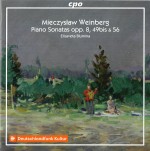 Meiczyslaw Weinberg – Piano Sonatas Opp 8, 49bis, 56 (Deutschlandfunk Kultur CPO 555 104-2 naxosdirect.com/items/weinberg-piano-sonatas-opp.-8-49bis-56-448637) is the fourth recording in Elisaveta Blumina’s project to record the piano works of this Russian composer. Although Polish-born, Weinberg’s writing strongly reflects his upbringing and education under the Soviet regime. Centralized authorities are threatened by creative expressions that challenge broadly imposed norms on a society, and for Weinberg this meant finding ways to work within established constraints without drawing too much official criticism that might derail his career and livelihood. Consequently, Weinberg and other composers struggled to find ways of expressing their modernism that would sustain their efforts in the long term rather than jeopardize them. Weinberg’s music is a fascinating example of how this compromise was struck. His writing uses traditional forms with a strong tonal centre that includes some careful exploration of unconventional melodic lines. There’s a hint of atonality but nothing jarring. His rhythmic structures are largely traditional but open to extended experimentation.
Meiczyslaw Weinberg – Piano Sonatas Opp 8, 49bis, 56 (Deutschlandfunk Kultur CPO 555 104-2 naxosdirect.com/items/weinberg-piano-sonatas-opp.-8-49bis-56-448637) is the fourth recording in Elisaveta Blumina’s project to record the piano works of this Russian composer. Although Polish-born, Weinberg’s writing strongly reflects his upbringing and education under the Soviet regime. Centralized authorities are threatened by creative expressions that challenge broadly imposed norms on a society, and for Weinberg this meant finding ways to work within established constraints without drawing too much official criticism that might derail his career and livelihood. Consequently, Weinberg and other composers struggled to find ways of expressing their modernism that would sustain their efforts in the long term rather than jeopardize them. Weinberg’s music is a fascinating example of how this compromise was struck. His writing uses traditional forms with a strong tonal centre that includes some careful exploration of unconventional melodic lines. There’s a hint of atonality but nothing jarring. His rhythmic structures are largely traditional but open to extended experimentation.
Blumina chooses three sonatas that offer a clear picture of Weinberg’s development. The earliest is Sonata No.2 Op.8 in A Minor written in 1942. Its beautiful melodic ideas are plentiful and their development easy to follow. The latest in the set is from 1978. The Sonata Op.49bis shows a general disregard for the caution and compromise in the earlier work. Here, angular clusters of dissonant notes freely interrupt melodic ideas that themselves are only distantly related. Blumina plays this sonata with all the boldness and discontent that Weinberg wrote into it. Her performance is powerfully intriguing.
 Shi-An Costello has a new recording that is more a concept than a performance. Rounded Binary – Preludes and Fugues of J.S. Bach and Dmitri Shostakovich (Blue Griffin Records BGR463 bluegriffin.com) finds relationships in works from very different historical periods and links them to explore that kinship. J.S. Bach is the launch point for the experiment and Dmitri Shostakovich is the destination. Costello first plays Bach’s Prelude and Fugue in C Major BWV846 at a conventional speed, then repeats the Prelude at four times the speed and just a fragment of the Fugue at half speed. Here he makes the transition to the Shostakovich Prelude in A Minor Op.87 which uses the same rhythmic pattern as the Bach prelude and is now familiar because of the high-speed version of the Bach on a previous track.
Shi-An Costello has a new recording that is more a concept than a performance. Rounded Binary – Preludes and Fugues of J.S. Bach and Dmitri Shostakovich (Blue Griffin Records BGR463 bluegriffin.com) finds relationships in works from very different historical periods and links them to explore that kinship. J.S. Bach is the launch point for the experiment and Dmitri Shostakovich is the destination. Costello first plays Bach’s Prelude and Fugue in C Major BWV846 at a conventional speed, then repeats the Prelude at four times the speed and just a fragment of the Fugue at half speed. Here he makes the transition to the Shostakovich Prelude in A Minor Op.87 which uses the same rhythmic pattern as the Bach prelude and is now familiar because of the high-speed version of the Bach on a previous track.
Costello explores other linkages that include the shared emotional world of Schumann’s Träumerei and the Bach C-major fugue already heard. He also ties together another pair of works by Bach and Shostakovich. Mostly interestingly, he steps more fully into his role as composer/performer in a combination of the now-familiar Bach Prelude in C Major BWV846 and the Shostakovich Prelude in C Major Op.87, blending the harmonic progression of the latter with the rhythmic patterns of the former.
It’s a creatively curious exercise and should spark some discussion among cognoscenti.
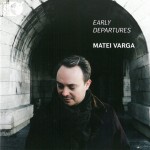 Matei Varga’s latest recording Early Departures (sonoluminus.nativedsd.com/albums/DSL92223-early-departures) pays homage to pianists who died young and whose potential remained unfulfilled. Not all the names in the program are well known. Varga’s performance of their work is a welcome document on great talents we might have watched grow into towering maturity. Tudor Dumitrescu, for example, killed at the age of 19 in the 1997 earthquake that struck Bucharest, was, by a few recorded accounts, another Van Cliburn. His 7 Preludes, Preludes in C Sharp Minor and B Minor are heartfelt works revealing a fluid writing style, and profound understanding of his instrument. His emotional maturity is striking. Regardless of whether his future would have evolved as a composer or a performer, the world is poorer for having lost him.
Matei Varga’s latest recording Early Departures (sonoluminus.nativedsd.com/albums/DSL92223-early-departures) pays homage to pianists who died young and whose potential remained unfulfilled. Not all the names in the program are well known. Varga’s performance of their work is a welcome document on great talents we might have watched grow into towering maturity. Tudor Dumitrescu, for example, killed at the age of 19 in the 1997 earthquake that struck Bucharest, was, by a few recorded accounts, another Van Cliburn. His 7 Preludes, Preludes in C Sharp Minor and B Minor are heartfelt works revealing a fluid writing style, and profound understanding of his instrument. His emotional maturity is striking. Regardless of whether his future would have evolved as a composer or a performer, the world is poorer for having lost him.
Dinu Lipatti lived to age 33. While he made his reputation principally as a brilliant performer, his deeper desire was to compose. His 15 works represent a variety of forms. Among his piano compositions are two works included on this disc as world premiere recordings: The Little Suite: Prelude, WoO B.35 and the Sonata Romantica, WoO B.13.
Another dimension of early loss is the grief of surviving parents. Hence Varga’s inclusion of Janáček’s In The Mists. The composer wrote this brief four-movement suite in the wake of his 21-year-old daughter’s death from typhoid fever.
Varga appropriately includes J.S. Bach’s serenely simple Adagio from the Concerto in D Minor, BWV 974 as the closing track in this homage.
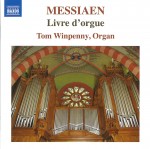 Organist Tom Winpenny plays the organ of Église Saint-Martin, Luxembourg in his latest recording, Messiaen – Livre d’orgue (Naxos 8.573845 naxos.com). The instrument dates from 1912 and is a synthesis of the German symphonic and French Romantic organ-building styles. It’s a big instrument with 85 ranks over 5 divisions.
Organist Tom Winpenny plays the organ of Église Saint-Martin, Luxembourg in his latest recording, Messiaen – Livre d’orgue (Naxos 8.573845 naxos.com). The instrument dates from 1912 and is a synthesis of the German symphonic and French Romantic organ-building styles. It’s a big instrument with 85 ranks over 5 divisions.
Winpenny’s choice for the opening track is the Verset pour la Fête de la Dédicace. Messiaen composed it in 1960 as a test piece for the Paris Conservatory. While it opens with a plainsong Alleluia, the piece is intended as an essay in birdsong. Winpenny has a field day pulling the organ’s most colourful stops for the effects the composer wanted. This recording of it is a world premiere, as is the CD’s final track, the Love Theme from Tristan and Isolde which Messiaen wrote as incidental music for a play.
The Livre d’orgue is as challenging for the listener as it is for the performer. Its seven movements require more than just impressive keyboard technique. The registration demands (orchestral colours) are complex and nearly overwhelming. Computerized, programmable registration is a welcome feature and this instrument has it. Winpenny masters the technical issues as well as the intellectual ones. Multiple thematic lines of varying tempi, texture and structure challenge the ear, especially with music that is starkly out of its ecclesiastical context. Nothing here for the faint of heart.
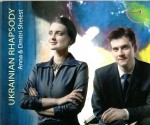 Anna and Dmitri Shelest make a welcome return to this column with their latest recording, Ukrainian Rhapsody (Sorel Classics SC CD 011 sorelmusic.org/Sorel/Recordings). As a piano duo they occupy less than half the disc, giving the majority of the program to Anna alone for some rarely heard works by Ukrainian composers. Mykola Lysenko, an avid collector of Ukrainian folk music, wrote the Suite on Ukrainian Themes Op.2 on the model of the Baroque dance suite. Its Toccata and Scherzo are particularly impressive for the relentless energy and sparkle Anna Shelest brings to them. While more contemporary, Levko Revutsky’s voice is still post-Romantic with the exception of his highly attractive Waltz in B-flat Minor. Anna recognizes the modern twists in the piece and lets it lean a little in the direction of music theatre.
Anna and Dmitri Shelest make a welcome return to this column with their latest recording, Ukrainian Rhapsody (Sorel Classics SC CD 011 sorelmusic.org/Sorel/Recordings). As a piano duo they occupy less than half the disc, giving the majority of the program to Anna alone for some rarely heard works by Ukrainian composers. Mykola Lysenko, an avid collector of Ukrainian folk music, wrote the Suite on Ukrainian Themes Op.2 on the model of the Baroque dance suite. Its Toccata and Scherzo are particularly impressive for the relentless energy and sparkle Anna Shelest brings to them. While more contemporary, Levko Revutsky’s voice is still post-Romantic with the exception of his highly attractive Waltz in B-flat Minor. Anna recognizes the modern twists in the piece and lets it lean a little in the direction of music theatre.
The really impressive tracks on the disc are the Three Extravagant Dances for piano four hands by Myroslav Skoryk. With fancifully cumbersome titles like Blues: Almost American, Can-Can: as from an Old Gramophone Plate, and Entrance and Dance: Almost Spanish-Moorish, these three pieces are huge. The writing is big, dense and loud – very loud. This is raw pianism and as thrilling as four hands performance can get. Be warned – it will knock you right off your seat!



